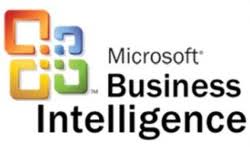About Microsoft BI Training
This course gives you a clear understanding about how to use MSBI tools along with Data Warehouse concepts in a real world scenario and that will help you to create sophisticated applications by yourself. We customized this course curriculum to meet the current industry standards. A basic level of SQL (T-SQL) knowledge is sufficient for the participant to get the full power MSBI suit.
Objective of this course:
At end of this MSBI training by GangBoard you will be able to,
- create ETL programs using SSIS (SQL Server Integration Services)
- handle exceptions in SSIS
- create log files in ETL tool
- define connection managers, transformations, send email, etc., using SSIS
- create reports with tables, matrix, charts, graphs using SSRS (SQL Server Reporting Services)
- configure Report Manager (Out of the box web application created by Microsoft)
- create OLAP cubes, dimensions, facts, roles, partitions, aggregations using SSAS (SQL Server Analysis Services)
- create MDX queries
Prince Tech Solutions Online MSBI training will help you to be an expert in using all the offerings and reports to build applications in the emerging tool of Business Intelligence. Its unique design aids everyone in the enterprise make quick and efficient outcomes, adaptable deployment options, and to ensure analytics meet changing business needs.
Microsoft BI – Course Content
Business Intelligence/Data warehousing Overview
- Business intelligence and features
- Components of MSBI
– SSIS -12
– SSRS -14
– SSAS -14
SQL Server Integration Services (SSIS)
~~~~~~~~~~~~~~~~~~~~~~~~~~~~~~~~~~~~~~
Introduction to SQL Server Integration Services
- Introduction to ETL
- SSIS package Lifecycle
- SSIS Package Architecture Overview
- Development and Management Tools
- Source Control for SSIS Packages
Business Intelligence Development Studio(Sql server data tools)
- Launching SSDT
- Project templates
- The package designer
- The Toolbox
- Solution Explorer
- The Properties window
- The Variables window
- The SSIS menu
Introduction to Control Flow
- Control Flow Overview
- Control Flow Tasks
- Precedence Constraints
- The Execute SQL Task
- The Bulk Insert Task
- The File System Task
- The Send Mail Task
Advanced Control Flow
- Containers – grouping and looping
- The Execute Process Task
- The Execute Package Task
- Other Control flow Tasks
Introduction to Data Flow
- Data Flow Overview
- Data Sources
- Data Destinations
- Data Transformations
- The Copy Column Transformation
- The Derived Column Transformation
- The Data Conversion Transformation
- The Conditional Split Transformation
- The Aggregate Transformation
- The Sort Transformation
- Data Viewers
- Other Dataflow tasks
Variables and Configurations
- Variables Overview
- Variable scope
- SSIS system variables
- Using variables in control flow
- Using variables in data flow
- Configuration Overview
- Configuration options
Debugging, Error Handling and Logging
- SSIS debugging overview
- Breakpoints in SSIS
- SSIS debugging windows
- Control Flow: The On Error event handler
- Data Flow: Error data flow
- Configuring Package Logging
- Built-in log providers
Advanced Data Flow
- Revisiting data sources and destinations
- The Lookup Transformation
- Getting Fuzzy: The Fuzzy Lookup and Fuzzy Grouping Transformations
- The Multicast Transformation
- The Merge and Merge Join Transformations
- The Slowly Changing Dimension Transformation
Extending SSIS through Custom Code
- Introduction to SSIS scripting
- Script in Control flow: The Script Task
- Script in Data flow: The Script Component
SSIS Package Deployment
- Configurations and deployment
- The deployment utility
- Deployment options
- Scheduling packages with Sql Server Agent
SQL Server Analysis Services (SSAS)
~~~~~~~~~~~~~~~~~~~~~~~~~~~~~~~~~~~~~~
Introduction to SQL Server Analysis Services
- Introduction to OLTP,OLAP,DWH
- Basics of Multidimensional Architecture
OLAP Modeling
- Modeling source schemas—stars and snowflakes
- Understanding fact(measures) and cube modeling
Using SSAS in SSDT
- Understanding the development environment
- Creating Data Sources and Data Source Views
- Creating cubes – using Cube Build Wizard
- Defining Dimensions and Measures in BIDS
Intermediate SSAS
- KPIs
- Perspectives
- Translations – cube metadata and currency localization
- Actions – regular, drill-through and reporting
Advanced SSAS
- Using multiple fact tables
- Modeling intermediate fact tables
- Modeling M:M dimensions, Fact (degenerate) dimensions, Role-playing dimensions, write back dimensions
Cube Storage and Aggregation
- Storage topics – basic aggregations, MOLAP
- Advanced Storage Design – MOLAP, ROLAP, HOLAP
- Partitions – relational and Analysis Services partitions
- Customizing Aggregation Design – Processing Design
- Rapidly changing dimensions / ROLAP dimensions
- Cube processing options
SQL Server Reporting Services (SSRS)
~~~~~~~~~~~~~~~~~~~~~~~~~~~~~~~~~~~~~~
Introduction to SQL Server Reporting Services
- Reporting Services Architecture
- Reporting Services Terminology
- Reporting Services Editions
- Reporting Life cycle
- Types of Reports
Creating Reports
- Shared Data Sources
- Creating reports with wizard
- Creating Tabular ,Matrix Reports from Scratch
Grouping and Sorting
- Creating Groups
- Calculating Totals and Percentages
- Interactive Sorting
- Creating Drill-Down Reports
Report Parameters
- Creating Report Parameters
- Creating Drop-Down Parameters
- Multi-Valued Parameters
- Debugging Parameter Issues
Publishing and Executing Reports
- Publish reports and execution from report server
- Creating Cached Instances
- Creating Snapshots and Report History
- Administering reports
Creating Matrix Reports and Charts
- Creating a Basic Matrix Report
- Matrix Subtotals
- Creating a Basic Chart
- Exploring the Charting Possibilities
Calculations and Formatting
- Creating Expressions
- Using the Global Collections
- Formatting Items
- Conditional Formatting
Managing Reporting Services
- Deploying Reports and Data Sources
- Exporting Reports and Printing
- Using the Web-Based Report Manager
Reporting Services Security
- Two Parts to Reporting Services Security
- Securing Access to Reports
- Data Source Security
Ad-Hoc Reporting with Report Builder
- The Report Builder Architecture
- Creating Report Model Projects
- Running Report Builder
